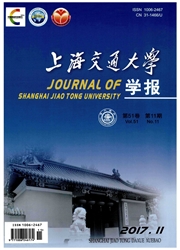

 中文摘要:
中文摘要:
基于Hill的二次各向异性弹塑性屈服准则(Hill’48),发展了可以用来描述各向异性多孔延性材料损伤演化发展的GTN(Gurson—Tvergaard—Needleman)弹塑性细观损伤本构模型,将材料的塑性各向异性行为和损伤发展有机地耦合起来.分别采用基于Mises的各向同性GTN弹塑性损伤模型、基于Hill’48的各向异性GTN弹塑性损伤模型和传统的Mises弹塑性模型,对NUMISHEET’2002中考题圆杯深拉深成形工艺进行了数值模拟,对板料成形过程中损伤的累积发展及其对材料性能的影响进行了分析.结果表明:延性板料的各向异性行为对其宏观力学性能和损伤演化都有影响;GTN模型中的损伤变量反映了成形历史的影响,为复杂加载路径下的成形极限判据的提出提供了理论依据.
 英文摘要:
英文摘要:
Based on the Hill's quadratic anisotropic yield criterion, the anisotropic GTN (Gurson-Tver- gaard-Needleman) mesoscopic damage model was expanded to describe the damage propagation for aniso- tropic voided ductile materials, which couples the plastic anisotropic behaviour and damage evolution. The isotropic GTN damage model based on Mises yield condition, the anisotropic GTN damage model based on Hill'48 yield criterion, and the Mises model with isotropic hardening were used to simulate a benchmark of NUMISHEET'2002, deep drawing of cylindrical cup, respectively. The damage propagation and its effect on material properties were analyzed. The result shows that the anisotropic plastic behaviour of sheet ductile material has the influence on the macroscopic mechanical properties and damage development. The void volume fraction can reflect forming history naturally, so it provides a theoretical foundation for prediction of forming limit criterion under complex loading path.
 同期刊论文项目
同期刊论文项目
 同项目期刊论文
同项目期刊论文
 期刊信息
期刊信息
